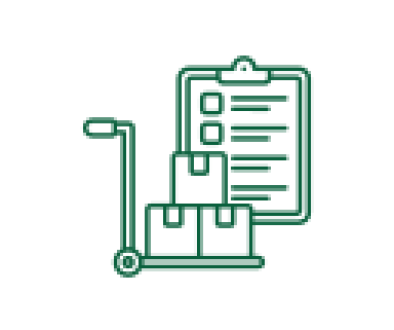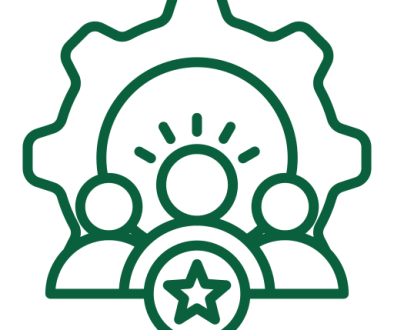
How to integrate a circular economy into your business
The Circular Economy is an economic system designed to eliminate waste and keep materials in use for as long as possible.
Benefits of Circluar Economy
Circularity is sensible from a sustainability perspective – it also makes good business sense.
The circular economy can:
- Give businesses a competitive advantage by leading the innovation curve,
- Open up new markets,
- Improve brand reputation and value
- Improve customer perceptions and relationships
- Reduce risk from price volatility and pressure from new legislation to supply chain failures.
We look at how you can integrate circularity into your business.
Using sustainable procurement
Sustainable procurement plays a critical role in building a circular economy. Supply chains account for a significant share of an organisation’s environmental impact, particularly in sectors reliant on imported raw materials.
Circular procurement involves sourcing goods and services that align with circular principles. This means prioritising
- Durability
- Reparability
- Recyclability
- Shared ownership models
The two core pillars of Sustainable Procurement are:
- Stimulating circular supply chains by increasing demand for circular products and services
- Supporting innovative, resource-efficient business models that enable product-as-a-service and closed-loop systems
Adopting circular procurement transforms purchasing into a strategic tool. It pushes organisations to look beyond upfront costs and consider the full lifecycle of what they buy. These kinds of questions become central to decision making:
- Should we lease this equipment rather than buy it?
- Can we procure materials with recycled or certified sustainable content?
By embedding circularity criteria into procurement, it becomes a lever for risk reduction, cost optimisation, improved resilience, and greater impact.
This evolution gives procurement a more strategic role across the supply chain.
It changes how suppliers are chosen, how performance is measured, and how relationships are managed. This paves the way for more transparent, circular value networks.
Product design
Product design is the engine room of the circular economy. It determines around 80% of a product’s environmental impact. When done right, it keeps materials in use, reduces waste, and enables new business models that are regenerative by design.
Here’s how product design promotes circularity:
- Design for durability: Products are made to last longer, reducing the need for frequent replacements. Think Patagonia jackets or Vitsoe shelving.
- Modularity and repairability: Components are easy to replace or upgrade. Fairphone, for example, lets users swap out parts like batteries or cameras with a screwdriver.
- Material selection: Designers choose materials that are recyclable, biodegradable, or already recycled. This minimises virgin resource use and simplifies end-of-life recovery.
- Design for disassembly: Products are assembled in ways that allow easy separation of parts and materials, which is crucial for effective recycling or remanufacturing.
- Product-as-a-service models: Design supports leasing or subscription models (e.g. lighting as a service), where ownership stays with the manufacturer, incentivising longevity and reuse.
- Closed-loop thinking: Designers consider the entire lifecycle – from sourcing and manufacturing to use and recovery – ensuring materials flow in loops, not lines.
Ensuring the product has a sustainable design requires innovation. If the product design is durable and / or modular, this can greatly reduce the raw materials needed to replace or repair broken parts.
Packaging
According to Accenture, 40% of plastic pollution comes from packaging, and if circular solutions don’t scale, we could see more plastic than fish in the ocean by 2050. That’s why businesses are under growing pressure from regulators and consumers alike.
Packaging plays a pivotal role in a circular economy. Here’s how packaging supports circularity:
- Use of renewable or recycled content: Circular packaging often incorporates biobased or post-consumer recycled materials, reducing reliance on virgin resources.
- Reuse and refill models: Reusable containers for groceries and refill stations for cleaning products. These models reduce single-use packaging and foster long-term material loops.
- Compostable solutions: For packaging that can’t be reused or recycled, compostable materials offer a biological route back into the ecosystem, especially for food-contaminated items.
- Right-sizing and minimalism: Reducing excess packaging both cuts down the use of materials and lowers emissions from transport and disposal.
- Design for recyclability: Packaging should be made from materials that are easy to recycle, like mono-material plastics or paperboard, and avoid complex laminates or mixed materials that hinder recycling.
Distribution
Distribution plays a crucial role in enabling a circular economy. Distribution in a circular economy is about more than moving goods from point A to B; it’s about reimagining logistics to support reuse, repair, remanufacturing, and recycling.
Here’s why distribution matters:
- Reverse logistics: In a circular system, products and materials need to flow back through the supply chain – for returns, repairs, or recycling. Efficient reverse logistics are essential to close the loop.
- Localisation and decentralisation: Circular models often favour local production and consumption. Smart distribution networks reduce transport emissions and support local economies by shortening supply chains.
- Product-as-a-service models: These require flexible, responsive distribution systems to deliver, maintain, and retrieve products. Such as leased appliances or shared mobility services.
- Inventory and material flow optimisation: Circularity demands
real-time tracking of materials and components to ensure they’re reused or reallocated efficiently, reducing waste and idle stock. - Collaboration across networks: Distribution becomes a connector between manufacturers, refurbishers, recyclers, and consumers, facilitating shared value creation across the lifecycle.
As one recent study points out, the potential to distribute value and power in circular systems is just as important as the flow of materials. Without equitable and transparent distribution networks, circularity risks becoming extractive in new ways.
End of life
Managing a product’s end-of-life in a circular economy is all about keeping materials in use and their value circulating, rather than letting them slip into landfill or incineration. Instead of seeing end-of-life as the end, circular thinking treats it as a new beginning.
Here’s how it works:
- Repair and refurbishment: Products are restored to working condition and reintroduced into the market. This extends their lifespan and reduces demand for new resources.
- Remanufacturing: Components are disassembled, cleaned, and rebuilt to original specifications. This is common in sectors like automotive and electronics.
- Recycling and material recovery: When reuse isn’t possible, materials are recovered and reprocessed into new products. The goal is to maintain material quality and avoid downcycling.
- Product take-back schemes: Brands collect used products from customers such as IKEA’s furniture buy-back or Apple’s device recycling – to ensure responsible recovery and reuse.
- Design for end-of-life: Products are created with disassembly, recyclability, and material separation in mind, making recovery easier and more efficient.
- Cradle-to-cradle systems: Materials from one product’s end-of-life become the input for another’s beginning – closing the loop entirely.
- Ease for consumers: For these systems to work, they must be intuitive and convenient for consumers. That means:
- Clear labelling and transparency about recycled content or repairability.
- Easy access to take-back schemes, repair services, or refill stations.
- Seamless digital platforms for renting, sharing, or reselling products.
When circular options are the most convenient ones, adoption accelerates and so does impact.
Examples of good practice of circular economy
Within the UK, there are many examples of positive circular economies in practice.
Interfloor
Interfloor, one of Europe’s largest underlay manufacturers, have adopted a circular economy for their products.
The Renu underlay reduces the amount of waste going to landfill and is 100% recyclable at the end of its life, allowing for a circular economy of materials. As it is made from sustainably sourced sugar cane, it can be considered proactively green, with the sugar cane actively capturing CO2 from the atmosphere. This particular underlay won the Flooring Innovation Award 2021.
Winnow
Within commercial kitchens food waste is a serious issue. Winnow’s solution to this is innovative. Using AI to provide an easy way to weigh, categorise and analyse the underlying reasons for food waste, Winnow’s technology increases awareness within the kitchen.
A typical client can expect to reduce waste by 40-70%, with an average reduction of about 50%. The AI system can help identify situations where overproduction has occurred, or work out the monetary value of the food waste. This helps staff to understand the causes and cost of food waste.
Winnow’s food waste technology is currently used in nearly 2,000 locations worldwide, helping to save the equivalent of 36 million meals annually, which translates to around $43 million in food cost savings. Environmentally, this equates to preventing 61,000 tonnes of CO₂e emissions and saving 4.4 billion litres of water each year.
It’s a standout example of how digital tools can drive circular economy outcomes by cutting waste, saving money, and reducing environmental impact all at once.
Teemill
Teemill is a standout example of circular fashion in action. Their closed-loop system is designed to eliminate waste by ensuring that every product is made to be returned, remade, and re-worn.
Every Teemill product comes with a label that encourages customers to send it back when it’s worn out. Returned items are then reprocessed into new garments, creating a continuous material loop.
Teemill only prints garments after they’re ordered, which eliminates overproduction and unsold stock – two major sources of waste in traditional fashion.
They only use organic materials and renewable energy. Products are made from GOTS-certified organic cotton in factories powered by wind and solar energy which reduces environmental impact from the start.
Teemill’s dyeing process uses a closed-loop water filtration system which is so effective that the wastewater is drinkable at the end.
They share their technology with other brands, helping scale circular fashion beyond their own operations.
Lastly, they’ve built software to manage reverse logistics. So, when a product is returned, it’s tracked, sorted, and remade efficiently. It’s a full-circle approach that redefines what sustainable fashion can be.
Embracing circular economy
If you’re ready to embrace the idea of a circular economy for your business, or are figuring out where and how to start, we can help to turn your circular ambitions into reality.
Our experienced circular economy team can help you to develop and apply a circular economy strategy, we will create a bespoke plan that is tailored to your organisation, including:
- Mapping how resources move through your business
- Identifying resource hot-spots such as raw materials with supply risks
- Assessing and developing areas for improvement
References
[1] https://link.springer.com/article/10.1007/s43615-024-00379-1


